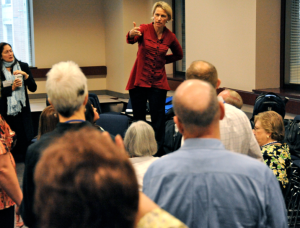What will it cost you NOT to be agile this year? Here’s what to do about it!
Welcome to the new year!  Full of possibilities, new goals and initiatives. Speaking of new initiatives: in working with organizations, I am often asked to help make the business case for improved agility to ensure buy-in from leadership, the board and across the organization. The case is compelling and I’ve detailed it in my recent book and a number of previous articles, as well as in every keynote and workshop I give.
Full of possibilities, new goals and initiatives. Speaking of new initiatives: in working with organizations, I am often asked to help make the business case for improved agility to ensure buy-in from leadership, the board and across the organization. The case is compelling and I’ve detailed it in my recent book and a number of previous articles, as well as in every keynote and workshop I give.
The case includes studies that show a strong relationship between organizational agility and sustained results (which, of course, is the ultimate metric for agile success). In my workshops, I regularly invite participants to identify their own industry or even role-specific ROI for agility. We start by asking: What will be improved if you or your team/organization were more agile?
Many respond with variations of examples I have already shared, such as increased market share and improved time to market. Others struggle to identify specific success indicators. When people struggle to identify what could be improved, I have found it often helps to flip the question and ask:
What will it cost you NOT to be more agile?
Or what will you lose if your competitors are more agile than you in 2025? It may be helpful to answer this question in 1, 3, 5 and 10 year increments. While indicators like market share and time to market are still at risk, flipping the question might also unearth more costs.
Here are just a few candidates:
- Brand relevance
- Ability to attract and retain top talent
- Customer satisfaction/loyalty
- Overall competitiveness
- Profitability
Increasingly, in most industries today, within a few years not becoming more agile is actually an existential threat. For example, more than half of the companies listed in the Fortune 500 list in 2003 no longer existed in 2023.
Determining the potential cost or benefit of becoming more agile in 2018 is more than an intellectual exercise. It is an opportunity to engage the passion and commitment necessary to sustain agile practices across the enterprise.
In the Harvard Business Review article that previewed his still influential book, Leading Change (1996), John P. Kotter identified not establishing a great enough sense of urgency as the number one reason change efforts fail. Unless your ability to be agile is elevated to an urgent strategic priority, your likelihood of success is minimal.
 The good news is that for those that develop this sense of urgency, the success rate may be as high as 75% (Kotter, 2006). As you look ahead to all you want to create and accomplish in the new year, take time to engage your colleagues’ hearts and minds in the urgent need to develop organization-wide competence, capacity and confidence to execute your strategy with agility.
The good news is that for those that develop this sense of urgency, the success rate may be as high as 75% (Kotter, 2006). As you look ahead to all you want to create and accomplish in the new year, take time to engage your colleagues’ hearts and minds in the urgent need to develop organization-wide competence, capacity and confidence to execute your strategy with agility.
Kotter, J. (2006). Leading change: Why transformation efforts fail. Harvard Business Review, Best of HBR, 2006 (1710), 1-10.
Need help becoming more agile this year?
Contact Pamela Meyer About Consulting
Through a wide range of consulting services, Meyer Creativity Associates, led by Pamela Meyer, Ph.D., will help you improve your organization’s results.

